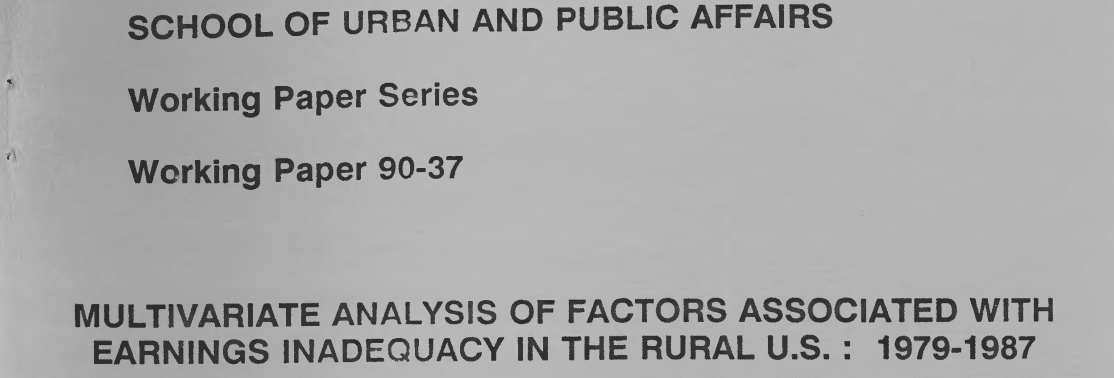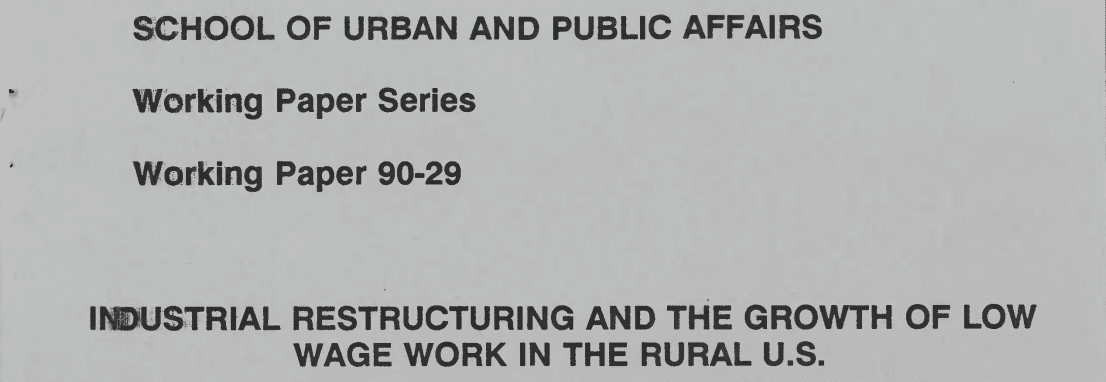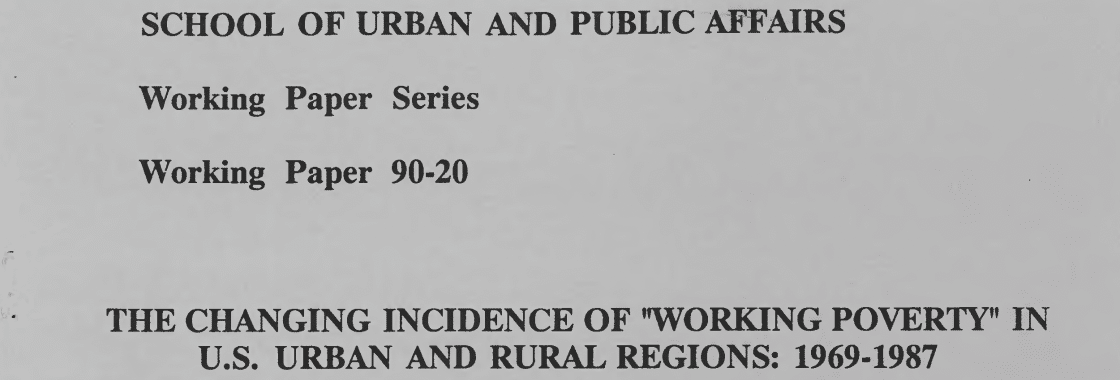labor

Building an Infrastructure of Care
This week, the White House announced its support for the Bipartisan Infrastructure Framework, hailing it as, “the largest long-term investment...

Raising the Floor: The Effects of the Minimum Wage on Low-Wage Workers
Paper aims to examine the real value of minimum wage declines and its impact on the American workforce, particularly paying attention to rural workers.

Treading Water: The Stagnation Of Family Income Since 1973
Report shows wage stagnation among working-class families from 1973-1993.

Minimum Wage Effects on Rural Labor Markets
Paper looks at the response of firms to changes in the minimum wage.

The Budgetary Implications of Reducing U.S. Income Inequality Through Transfer Programs
Report uses data from the Census Bureau regarding list and asset information at the household level to provide perspective on relative costs of reducing income inequality by increasing program benefits.

Piney Road: Work, Education, and Family Dynamics
Paper aims to use case study of several families in the Piney Road community of Georgia to highlight situational aspects of poverty, education, family, and work in the Rural South.

Spatial Inequality: Regulatory Policy & Capacity
Paper argues that while increasing spatial inequality can be explained with reference to the internationalization of the U.S. economy and firm competitiveness, changing market conditions are not the only factors re-shaping the space economy.

The Slowdown in Nonmetropolitan Development: The Impact of Economic Forces and the Affect on the Distribution of Wages
Paper explores the divergence in nonmetropolitan and metropolitan development over the past decade by addressing three questions.

Analysis of Earnings Inadequacy in Rural US
Paper examines income variations among rural families through examining the ratio of a worker's annual earnings compared to the poverty level for a family of four.

Industrial Restructuring and the Growth of Low Wage Work in the Rural U.S.
Report examines the contribution of industrial change to the growth of low wage work in the rural United States.

The Changing Incidence of Working Poverty in the U.S.
Paper examines how many individuals aged 16 and older earned at least some wages and salaries over the course of a year but had families which nevertheless had aggregate annual incomes which left them below the official census poverty line for a family of their size and structure.

Working Below The Poverty Line in Rural and Urban America
This report examines how the earnings of American workers changed from 1970-1990
